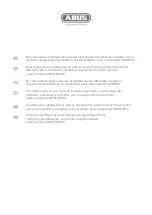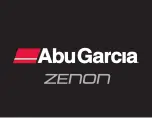
20 - 25W iron for most of parts. For the
BNC connector higher power iron (50 -
100W) is recommended if available.
1
Rosin solder wire (0.8 - 1mm dia.)
Digital multimeter
Screw driver (phillips, size# 0)
2
3
4
Flush cutter
5
Tools you need
Tweezers
6
Assembly the Main Board (follow the order as numbered)
Step 1
JYE Tech Ltd.
1. Check the main board
2. Test Signal Terminal
SW5
DPDT
4. Slide Switch
:
6. Tact Switches
12x12x7mm
7. Remove Resistor R30
:
SW1, SW2,
SW3, SW4
6. Pin-header (male)
2 X 5 pin,
2mm pitch
:
J2
SW1
2P3T
3. Slide switch
:
J1
BNC
5. BNC connector
:
Page 2
The thicker pins need
to heat up longer to get
good soldering result.
Note:
DC 9V power supply with 200mA (or higher)
current capacity and 5.5 x 2.1mm plug.
7
1. Resistors
Always meter resistor
values before soldering.
Note:
R1
510K
Ω
R2
5.1M
Ω
:
:
R3 1
.
Ω
2
M
:
R4
11K
Ω
:
R5, R6, R14
1K
Ω
:
R7 300
Ω
:
R8, R16
150
Ω
R9
9
1
Ω
:
:
R10
3
0
Ω
:
R11, R12
15
Ω
:
R15
130
Ω
:
R13
3K
Ω
:
Assembly the Analog Board (follow the order as numbered)
Step 2
2. Ceramic Capacitors
0.1 F
μ
:
330pF
:
1pF
:
C1
C6
15
0pF
:
C2
C4
4. Electrolytic capacitors
:
100
μ
/ 1 6 V
F
Solder positive pole
(the longer lead) to
the square pad
C8, C10,
C11
J8
4.8 x 0.8mm terminal
:
Before soldering bend the terminal to the
shape as shown in the left photo above.
Note:
Before mounting any parts to the main board
connect a 9V power supply (center positive) to J7
on the board to check the display.
1
2
You should see the scope boots up to a screen
similar to the photo below. D1 (LED) blinks twice.
Now apply power again. Test power switch
and tact buttons for their correct functions.
Apply power
Check
display
1
2
5. Pin-header (male)
1X4 pin, 0.1" pitch
:
J2
Let iron stay on one pad of the resistor until solder on
the other pad melt and then remove the part.
Note:
R30 is used to bypass SW5 so as the mainboard can be
tested without the power switch. It must be removed
for correct functioning of the power switch.
Put leads through mounting holes from the side with
part outline. Ensue component evenly touch PCB.
1
Solder leads at the other side. Solder should fully
fill and cover soldering pads.
Avoid bridges between
neighbering pads.
Cut unused leads
flush with cutter.
2
3
Soldering Hints
Important
If your kit does not have SMD
device pre-soldered you are
strongly suggested to install
all SMD parts before mounting
through-hole parts. Please see
instructions at Page 1.
Needle-nose pliers
8
Small slotted screwdriver (2mm width,
for cap trimmer adjustment)
9
Finished
Do not solder any parts to the board if you find
problem. Otherwise warranty will be voided.
Report the problem to vender or JYE Tech.
J6
0.1" pitch, rightangle
3. Power Connector (optional)
:
If you have questions post them
Resistors are all 1/8W.
(DC jack is 5.5mm dia.
with 2.1mm core)
JYETech
WWW.JYETECH.COM






















